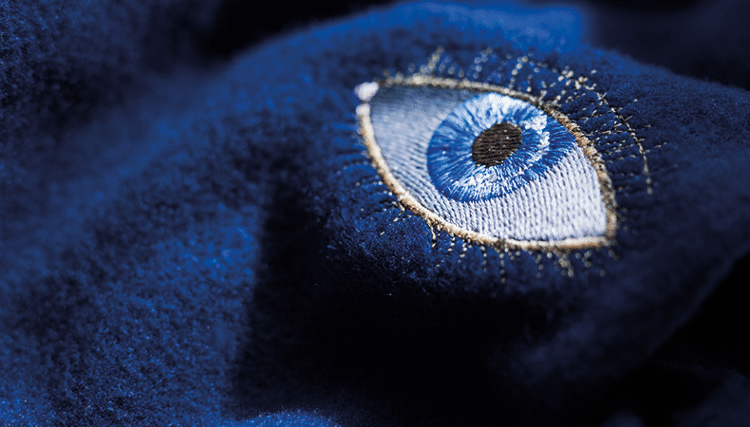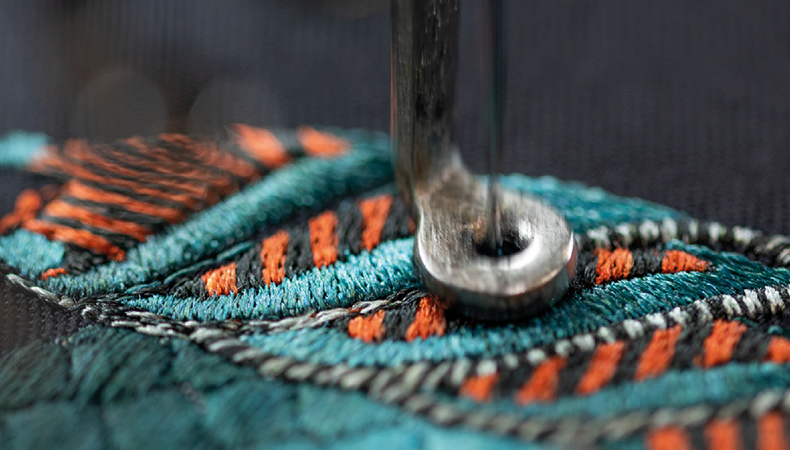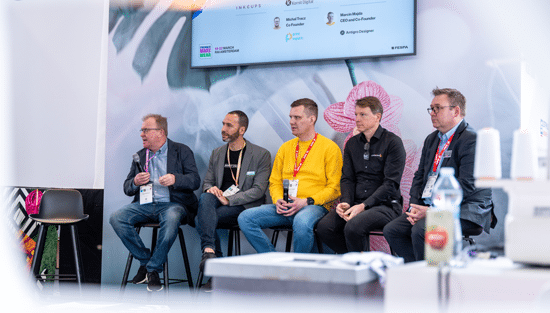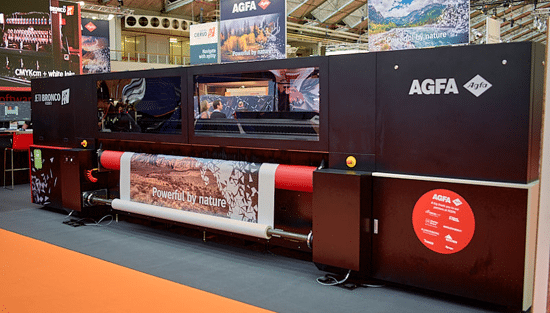Multicoloured embroidery on demand

Conny Svanberg, digital embroidery expert at Coloreel, and exhibitor at the Personalise Make Wear feature at Personalisation Experience and Sportswear Pro 2024, discusses dye sublimation and colour management.
Tell me about your experience in the industry...
I stumbled into the embroidery business in 1996, focusing on digitising. In 1998, we formed an embroidery production company in Kungsbacka, on the west coast of Sweden, close to Gothenburg. Since then, I have been involved in embroidery, expanding to screen printing, heat transfer printing, sublimation printing and laser cutting/engraving.
Business interests and coincidences led me to encounter Coloreel at the beginning of 2013. I worked for them five years later. After doubling up work with Coloreel and my own company, I put the embroidery shop up for sale, and in September 2019, Coloreel became my only engagement.
At Personalise Make Wear, you were able to add embroidery designs to apparel within seconds of a customer using a QR code and adding some specifications. Could you tell me a bit more about the software used, Pulse ID?
PulseID is an automation system from Tajima Software Solutions that directly brings business from web shops to the machinery in a fulfilment station. The system lets customers choose from available items to personalise using embroidery (with Coloreel capabilities), printing, laser engraving and more. PulseID prepares and generates appealing images of the embellished product and the needed production files.

Each embroidery machine works on different kinds of fabric and will consume different amounts of thread, so automation is crucial here. You split the colouring file into time units, like editing a movie, change the colour in each unit and then the colour is sublimated and cured onto the thread as it runs through the production line.
Where did the demand come from and who is the targeted audience?
The main target market is the e-commerce business and larger producers – we are experiencing an increasing demand for personalisation and on-demand embroidery worldwide. We are also noticing that smaller embroidery shops are interested and eager to move from being producers to entering the e-commerce business. With Coloreel technology, they can stand out and increase their business. The PulseID model is also entirely scalable.
What functionality does PulseID provide to their customers? What limitations are there on colour or size or type of embroidery design?
The functionalities of PulseID give the customer total freedom not only to select personalised items but also to see how the finished item will look. This shortens the time from interest to designing and personalising the product. Once the decision to buy is made, it is just a matter of minutes (or seconds) from accepting the offer to completing an order at the fulfilment site and the order is ready to be produced. This also emphasises the ongoing trend towards personalisation.

We have the ability to add as many as 100 colours to a single metre of thread, or thousands of colours overall. We can change colour every 1.3mm. Therefore, for 10 different colours we don’t need 10 different threads. We work with libraries of different swatches and can offer millions of options, but of course we do not want to overwhelm the customer. As with many personalisation options, we limit their choices in input to certain parts of the design or certain colour options. I recently received some figures and statistics from a meeting with a large actor in the business. Seven out of 10 customers were using the software to choose a unique, single colour – not gradients, stripes, or other more complicated options.
How long does it take for the product to go to market?
The time embroidery takes varies from a couple of minutes to hours. Every stitch uses machine time and time for preparation and finishing. On average, a ‘normal’ logotype will consume 10 to 15 minutes. One to several hundred items can be finished simultaneously, depending on the machine size and capacity. On-demand embroidery in smaller quantities will generally reach the customer within a few days.
How important is collaboration in driving forward mass customisation?
All the big businesses in the embroidery business believe there is a considerable market for personalisation, and collaborating with us at Coloreel is a natural way to expand their offerings.
How sustainable is the thread you use?
We feed the Coloreel unit with recycled polyester thread from PET bottles as the raw material. We use sublimation techniques to cure the water-based ink onto the thread, and we only dye the thread to be used. The Coloreel polyester thread is just as durable and colour-fast as traditional polyester thread, and it excels in giving correct colour to the thread.
The sublimation technique also eliminates 97% of our wastewater and all environmentally harmful chemicals. Because we are only colouring thread, one single head machine running full-time for a year will only use up around two litres of ink.
Colour-matching embroidery or stitches to materials is also good for patching up workwear or upgrading worn garments: this adds value to older apparel and increases reuse and sustainability.
What were you impressed by at FESPA Global Print Expo?
The strong drive towards sustainability, personalisation and digitalisation to enable more productive and sustainable processes.
FESPA Global Print Expo and Personalisation Experience will return from 6 to 9 May at Messe Berlin in Germany. Register your interest here to discover the latest innovations in print, signage and personalisation in print.
Become a FESPA member to continue reading
To read more and access exclusive content on the Club FESPA portal, please contact your Local Association. If you are not a current member, please enquire here. If there is no FESPA Association in your country, you can join FESPA Direct. Once you become a FESPA member, you can gain access to the Club FESPA Portal.
Recent news

The personal touch: visit Personalisation Experience’s SmartHub Conference 2025
Join the SmartHub Conference at Personalisation Experience next month to stay ahead of the latest tech and trends.

How to build brand trust using customer reviews
Reviews can benefit or damage your business’s reputation. From spreading the word to social proof, here is why reviews matter and what you can do to manage your customer reviews to improve your brand’s reputation.

Regulation guidance: Extended Producer Responsibility
Extended Producer Responsibility (EPR) is now in effect. What does it mean for those in the print industry? Sustainability consultant Rachel England outlines everything you need to know.

How to maximise the automation of your production workflow
Workflow automation has evolved beyond basic file prep, now encompassing job submission, prepress, and postpress. Printers automate to boost productivity, cut waste, and address skill shortages. Implementing tailored automation, from RIPs to MIS, optimises throughput and profitability, minimising human intervention.